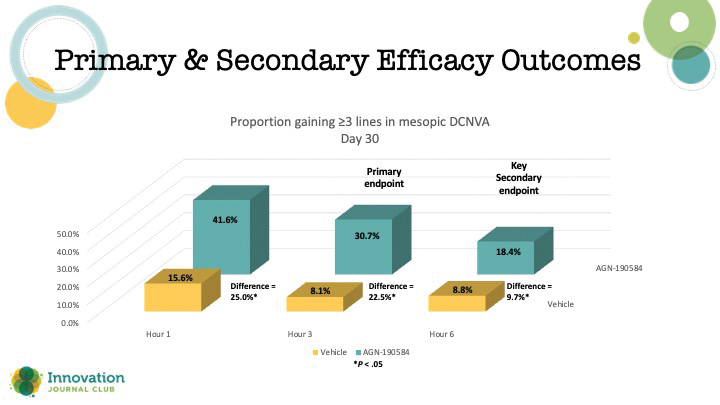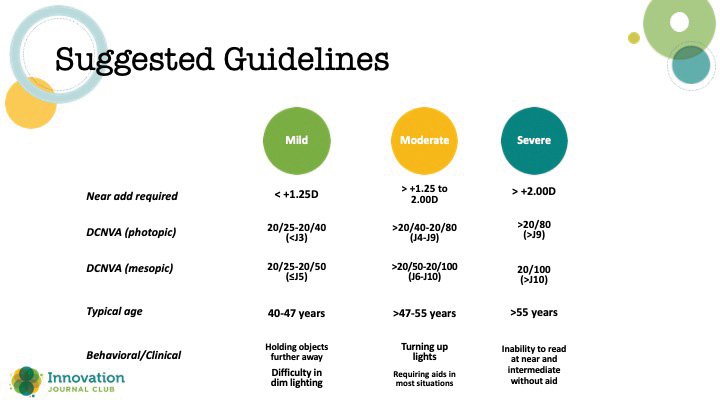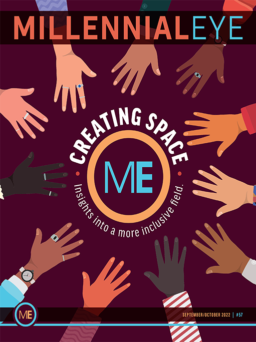Watch the latest episodes of the Innovation Journal Club series on Eyetube.

The availability of pharmacologic management strategies for presbyopia has helped fill a treatment gap for patients who demonstrate the early signs of presbyopia. In episode 6 of Innovation Journal Club, Ralph Chu, MD, explains how this shifting paradigm represents an opportunity to advance the refractive mindset.
Topical Pilocarpine Phase 3 Study
The first entrant to the topical treatment category, pilocarpine HCl ophthalmic solution, 1.25% (Vuity; Allergan/AbbVie), mechanistically induces miosis. While pilocarpine is associated with the potential for adverse effects in high doses, Vuity is formulated in a low-dose formulation with a unique delivery vehicle that leaves the molecule inactive until it is introduced to the ocular surface—thus potentially reducing bioavailability to nontarget tissue.
Pilocarpine is a cholinergic muscarinic receptor agonist that acts through the M3 muscarinic receptor on the iris sphincter to constrict the pupil, thereby improving depth of focus via a pinhole effect. Reducing the pupil size to about 40% to 50% of its original dimensions provides an optimal range of focus that improves near vision without sacrificing distance.
In the phase 3 GEMINI study, Vuity demonstrated improvement in near vision without sacrificing distance under various lighting conditions.1 Furthermore, under mesopic conditions, the duration of effect was statistically significant out to 6 hours, and for intermediate vision, it was statistically significant out to 10 hours (Figure 1).

Figure 1. Primary and secondary efficacy outcome in the GEMINI 1 study.
“There is a secondary effect,” Dr. Chu said. “There’s a stimulation of the ciliary body. The cholinergic system causes sphincter contraction for the pupil, but it also causes accommodative spasm. And that’s important for our viewers because in some of those younger presbyopes who still have accommodative ability, like 40-year-olds, 41-year-olds, they might get a little bit of a myopic shift with this.”
There was a higher rate of headache, blurred vision, and redness in the active treatment arm compared to the vehicle, but overall, the drug was well-tolerated, and there were no serious adverse events. According to Dr. Chu, explaining the risks and benefits, as well as educating recipients on the potential to eliminate wearing glasses, might take on different prominence with this category of treatment. Because the treatment of presbyopia is not medically urgent per se, patients willing to try topical therapy may have different goals relative to those who are being treated with topical therapy for other ocular disorders.
“It’s really taking that mindset that this is not just a medical condition like glaucoma, where the patients have to take a medicine. We take a lifestyle approach. It’s really more about learning about what [the patient’s] needs are, and then I tell them about the limitations,” Dr. Chu said.
Presbyopia Classification System by Severity
The expanding array of presbyopia treatment options suggests an opportunity to customize a plan for each patient. One step in that direction, Dr. Chu said, is a recent publication proposing a new classification system by presbyopia severity.2
The expert panel focused on five clinical or patient features that help determine the degree of accommodative loss as well as how significantly it is affecting a patient’s near vision and lifestyle (Figure 2). Near add power was found to be the most significant indicator of presbyopic severity, while other factors (ie, behavioral/clinical findings, near visual acuity, and age) were found to be additive in refining classification of the presbyopia’s severity.

Figure 2. Suggested criteria for classifying presbyopia by severity.
“This study is one of the most important things that’s helped guide us in clinical practice,” Dr. Chu said. “Typically, in our conversations prior to this, it was just about age. ... But now that we’re looking more carefully at treating presbyopes, I’ve found that the Jaeger vision is the most effective counseling tool.”
1. Waring GO 4th, Price FW Jr, Wirta D, et al. Safety and efficacy of AGN-190584 in individuals with presbyopia: The GEMINI 1 Phase 3 Randomized Clinical Trial. JAMA Ophthalmol. 2022;140(4):363-371.
2. McDonald MB, Barnett M, Gaddie IB, et al. Classification of presbyopia by severity. Ophthalmol Ther. 2022;11(1):1-11.





